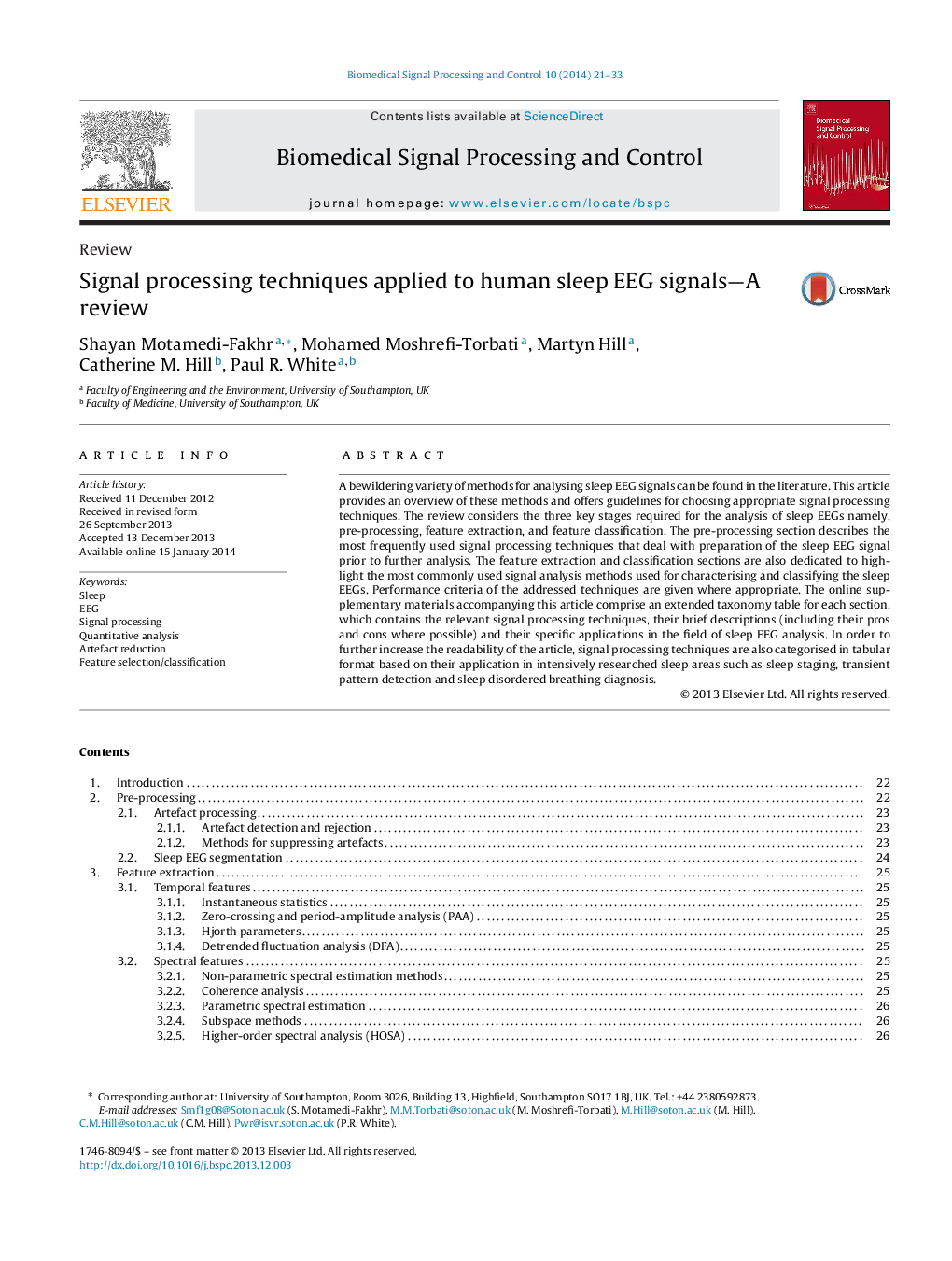| Article ID | Journal | Published Year | Pages | File Type |
|---|---|---|---|---|
| 558786 | Biomedical Signal Processing and Control | 2014 | 13 Pages |
A bewildering variety of methods for analysing sleep EEG signals can be found in the literature. This article provides an overview of these methods and offers guidelines for choosing appropriate signal processing techniques. The review considers the three key stages required for the analysis of sleep EEGs namely, pre-processing, feature extraction, and feature classification. The pre-processing section describes the most frequently used signal processing techniques that deal with preparation of the sleep EEG signal prior to further analysis. The feature extraction and classification sections are also dedicated to highlight the most commonly used signal analysis methods used for characterising and classifying the sleep EEGs. Performance criteria of the addressed techniques are given where appropriate. The online supplementary materials accompanying this article comprise an extended taxonomy table for each section, which contains the relevant signal processing techniques, their brief descriptions (including their pros and cons where possible) and their specific applications in the field of sleep EEG analysis. In order to further increase the readability of the article, signal processing techniques are also categorised in tabular format based on their application in intensively researched sleep areas such as sleep staging, transient pattern detection and sleep disordered breathing diagnosis.
